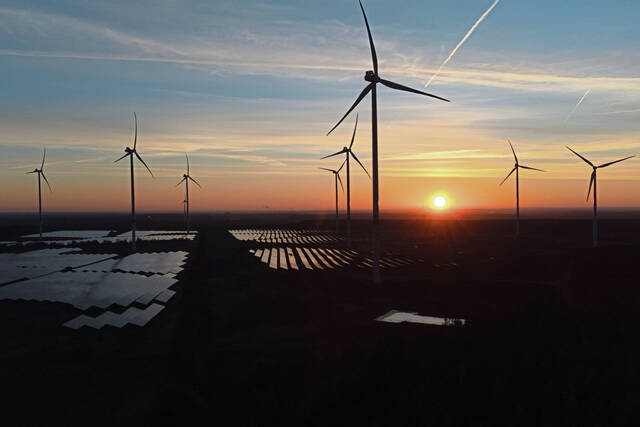Counterpoint: America needs affordable energy — coal doesn’t fit the bill
For a decade now, coal has been on the way out. The industry’s future was considered mainly dead and buried — until the Trump administration decided to pull out every stop to dig it out of the grave.
And this wasn’t caused by any “Green New Deal” boogeyman stuff: The coal industry does not have the economics to survive intense competition from less expensive alternatives.
President Donald Trump’s efforts to revive coal will cost the U.S. time and money we can’t afford to waste, driving up energy costs for Americans and leaving the mining communities behind.
As we look toward the future, we should not be reaching backward for solutions to our energy supply.
Coal consumption for electricity has been in a steady decline since at least 2008 as cheaper natural gas and renewable energy sources gained a share of the supply. Coal plants generated only 15% of electricity in 2024, down from 19% in 2020 and 51% in 2001.
Based on research from the Institute for Energy Economics and Financial Analysis, coal is expected to continue its steady decline for the remainder of the decade. The institute estimates that by 2030, 63% of the peak total of coal-fired capacity will be closed, and it’s possible that all remaining coal capacity still online at that point may be shuttered by 2040.
The arguments people made in the past about coal being economically profitable are no longer applicable. Coal plants and mines are usually decades old, they’re high polluters and they’re not making a profit. A study from Energy Innovation finds that 99% of coal plants are more expensive to run than to replace with new solar or wind energy, and are getting more expensive to run by the day.
The median cost of new solar projects is $24 per megawatt-hour compared to a median marginal cost of $36 for the operations of existing coal plants.
What’s more, this is an industry that, on its way out, has prioritized taking care of its CEOs, not its workers. As major coal companies filed for bankruptcy in 2015 and 2016, executives got massive compensation increases while workers were laid off and employee benefits were slashed. As profits shrank, executives paid themselves more, while miners paid the price.
This is all to say nothing of the public health consequences, environmental damage and climate effects that coal mining and power production pose. Despite making up a minority of electric power generation, coal makes up more than half of all harmful climate emissions from the electric power industry. Coal-fired power plants also have detrimental effects on public health: they were responsible for 460,000 deaths between 1999 and 2020, and they have estimated health costs up to $26 billion annually.
Even as the Trump administration has moved to block permits for wind and solar development and terminated federal clean energy investments that were underway, it has thrown every subsidy in the book to revive the dying coal industry.
In April, Trump signed an executive order aimed at revitalizing the production of coal by opening federal lands to coal leasing and extending the operating life of coal plants across the country. Later that month, he also added coal to his list of “critical minerals” and has used his “energy emergency” as an excuse to push through new mines.
This summer, Congress enacted a costly taxpayer subsidy for coal mining as part of its budget bill that cut health care and clean energy investments. This attempt to prop up coal will come at the expense of people who have to pay higher electricity bills, or question the reliability of their energy.
Coal’s decline was a problem of economics, and its revival only works if Americans are willing to pay more for less. By trying to bring back the coal industry, this administration is fighting the free markets that have shifted away from expensive and polluting coal plants in favor of cheaper, cleaner energy sources.
The Trump administration’s unwavering commitment to fossil fuels threatens to make energy costs higher for Americans while continuing to ignore solutions to energy independence.
The United States should let facts and economic realities take care of coal. What we need to focus on is affordable, abundant and clean energy sources.
Jenny Rowland-Shea, director of Public Lands at the Center for American Progress, wrote this for InsideSources.com.
Remove the ads from your TribLIVE reading experience but still support the journalists who create the content with TribLIVE Ad-Free.

